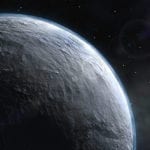 Weird Stuff
Weird Stuff  Weird Stuff
Weird Stuff  Mysteries
Mysteries 10 Tragic Disappearances and Deaths in Joshua Tree National Park
 History
History 10 Ways Childhood Really Sucked in the Old West
 Music
Music 10 Name Origins of Famous Bands from the 1990s
 Religion
Religion 10 Biggest Turnarounds by the Catholic Church
 Weird Stuff
Weird Stuff 10 Unbelievable Times Laws Had Unintended Consequences
 Humans
Humans Ten Historic Women Who Deserve Way More Credit Than They Got
 Movies and TV
Movies and TV 10 Films That Spawned Major Lawsuits
 History
History Ten Times Towns Were Wiped Off the Face of the Earth
 Creepy
Creepy 10 of the Most Disturbingly Haunted Public Houses in the UK
 Weird Stuff
Weird Stuff 10 Niche Subcultures That Are More Popular Than You Might Think
 Mysteries
Mysteries 10 Tragic Disappearances and Deaths in Joshua Tree National Park
 History
History 10 Ways Childhood Really Sucked in the Old West
Who's Behind Listverse?

Jamie Frater
Head Editor
Jamie founded Listverse due to an insatiable desire to share fascinating, obscure, and bizarre facts. He has been a guest speaker on numerous national radio and television stations and is a five time published author.
More About Us Music
Music 10 Name Origins of Famous Bands from the 1990s
 Religion
Religion 10 Biggest Turnarounds by the Catholic Church
 Weird Stuff
Weird Stuff 10 Unbelievable Times Laws Had Unintended Consequences
 Humans
Humans Ten Historic Women Who Deserve Way More Credit Than They Got
 Movies and TV
Movies and TV 10 Films That Spawned Major Lawsuits
 History
History Ten Times Towns Were Wiped Off the Face of the Earth
 Creepy
Creepy 10 of the Most Disturbingly Haunted Public Houses in the UK
Top 10 Giant Facts About the Dwarf Planets
It’s a small world after all. That was the conclusion reached at an August 2006 meeting of the International Astronomical Union. And while only 424 of an eligible 9,000 voting members participated, it amounted to a planetary eviction notice for Pluto.
But the meeting did more than reduce the solar system from nine full-fledged planets to eight. It also created an entirely new classification of celestial bodies. Let’s explore our solar system’s five little wonders: the dwarf planets.
10 Hypothetical Planets That Could Exist In Our Solar System
10 Ceres: So Nice They Classified It Twice
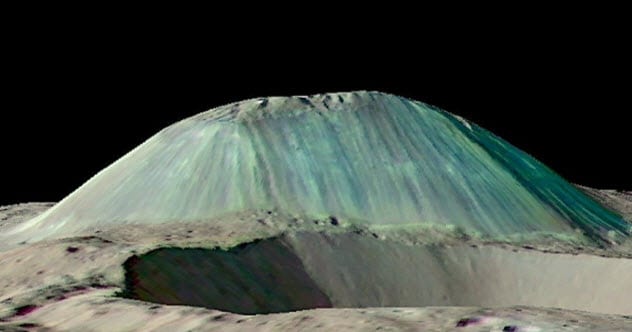
Despite being the smallest of the five dwarf planets, Ceres was the first one discovered. The reason is that Ceres, located in the Asteroid Belt between Jupiter and Mars, is by far the closest. So even though it’s the dwarfiest dwarf, Sicilian astronomer Giuseppe Piazzi spotted it back in 1801 – more than a century before Pluto made its planetary presence known.
Calling Ceres a planet – even of the dwarf variety – seems generous. At only 950 km in diameter, its mass is just 0.015 percent of Earth’s and 14 times less than Pluto. In fact, Ceres is so minuscule that it’s ALSO classified as an asteroid; though in Ceres’ defense, it is the largest asteroid in the solar system.
Ceres is a boulder among relative pebbles: it comprises a full quarter of the Asteroid Belt’s total mass and, unlike its neighbors, has a nearly round body and likely has water ice beneath its crust. Supporting this assertion, in 2014 the European Space Agency’s Herschel Space Observatory detected water vapor spewing from two different areas of Ceres – possibly from ice volcanoes, which is pretty awesome.
Ceres is distinct enough from its surroundings that it was bestowed dwarf planet status in 2006. It is named for the Roman goddess of harvests – which is also how breakfast cereal got its name.[1]
9 Mission to Ceres: A Trip Back in Time
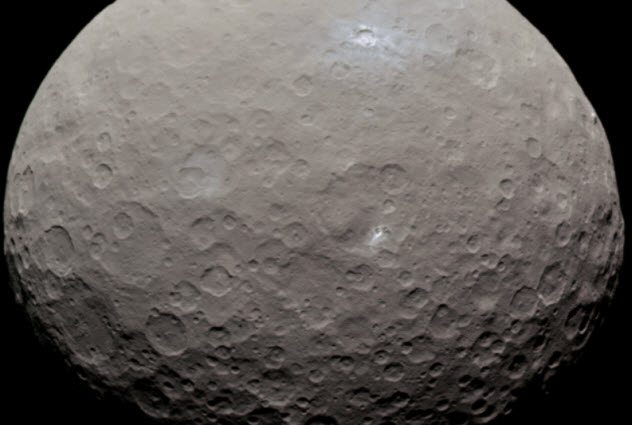
Ceres is a still-intact survivor from the earliest days of the solar system, some 4.6 billion years ago, so studying its characteristics provide revelations into the solar system’s basic building blocks. In 2007, NASA launched an ambitious mission to comprehensively map Ceres (and Vesta, the next-largest object in the Asteroid Belt) by placing a spacecraft in orbit around it. Dubbed the Dawn Mission in honor of its origins-centric intentions, the spacecraft reached Ceres in March 2015.
The intel gathered indicates Ceres likely formed farther from the sun and migrated into the inner solar system; this assertion was drawn because Ceres’ surface composition includes large amounts of condensed ammonia, which requires the outer solar system’s colder temperatures to form. The mission also found an abundance of water, including a rocky mantle with water-rich rocks (such as clays) and an icy outer shell.
Scientists were particularly intrigued by Ceres’ organics – the building blocks of life. A specific carbon-hydrogen chain of organics was discovered in one of Ceres’ deepest craters, suggesting the material initially formed in its once-deep ocean.
Adding to the excitement is evidence that Ceres was geologically active relatively recently. This is supported by its glittering array of more than 300 bright features, called faculae, that gleam atop an otherwise dark landscape. The brightest of these contains the largest deposit of carbonate minerals ever seen outside Earth. This suggests briny water rose to Ceres’ surface in the recent past and deposited salts – a sign of a healthy, “living” planetoid.[2]
8 Eris: A Misjudged Nail in Pluto’s Grave
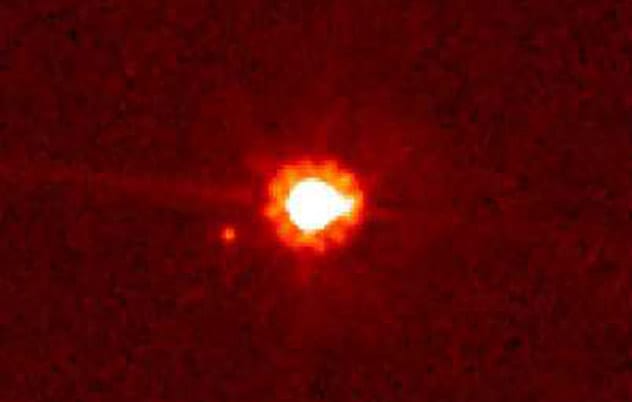
One of the reasons Pluto got demoted in 2006 was the discovery of Eris a year earlier (to this day, the two still don’t speak). When astronomers found Eris in January 2005, it was initially pronounced the largest dwarf planet yet; its diameter was estimated at 2,300-2,400 km, making it 27% more massive than Pluto. This prompted the International Astronomical Union (IAU) to reconsider its definition of a planet – the first demerit in Pluto’s loosening grasp on full planethood.
The problem is… well, they were just wrong. Further observation suggested that Eris is actually slightly smaller than Pluto. Unfortunately, this wasn’t realized until 2010 – four years after Pluto got the boot. Oops. Fortunately, sheer mass wasn’t the prime reason Pluto was downgraded – more on that later.
Back to Eris, which has a wild streak to it. For one, its orbit is very erratic, crossing Pluto’s and nearly intersecting Neptune’s in an oddball, oval-shaped journey that takes Eris and its moon, Dysnomia, 557 years to circle the sun – more than twice as long as it takes Pluto. In doing so, Eris dips in and out of the Kuiper Belt, a band of mostly asteroid-sized bodies beyond Neptune occupied by each dwarf planet except Ceres.
The surface of Eris likely consists of nitrogen and methane dispersed in an extremely thin, one-millimeter layer. Some scientists think that what we see as Eris’ surface actually is its condensed atmosphere, which potentially expands into gas when the planetoid is closer to the sun.[3]
7 The Tenth Planet?
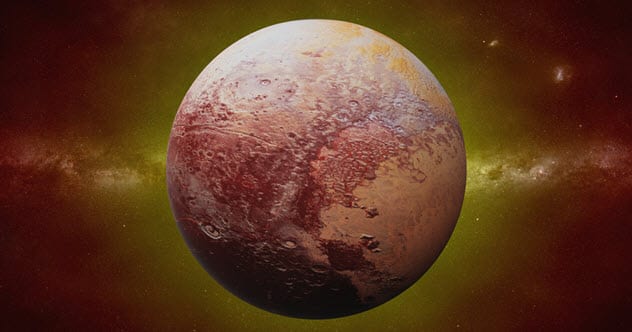
The preceding entry discusses how Eris’ discovery led to a re-examination of how planets were classified, starting Pluto’s yearlong slide to demotion. But that outcome wasn’t inevitable; another distinct possibility was adding Eris as the solar system’s tenth full-fledged planet. Unfortunately for Pluto, the debate descended into the IAU rewriting its definition of a full planet, and one criteria – the ability of a celestial body to clear its surroundings through gravitational dominance – was met by neither Eris nor Pluto.
For that reason, on August 26, 2006, Pluto was demoted and a new designation, “dwarf planet,” created. Along with Pluto, Eris and Ceres were given this classification as well, with many dubbing Eris “The First Dwarf” because its discovery led directly to this specified category.
In fact, Eris’ disruptiveness is espoused in its very name. When initially discovered in 2005, it was unofficially called Xena. But given its divisive impact on both the IAU and third-grade science projects, the planetoid was renamed to honor the Greek goddess of discord.
“[Eris] stirs up jealousy and envy to cause fighting and anger among men,” explains Mike Brown, a professor of planetary astronomy at the California Institute of Technology. As legend has it, after being snubbed for a wedding invitation, Eris spitefully started a spat among goddesses that led to the Trojan War.
“She’s quite a fun goddess, really,” Brown adds. Pluto might use a different adjective.[4]
6 The Potato-Shaped Dwarf
Another Kuiper Belt native is Haumea, whose standout characteristic is its distinct flattened shape. This is because Haumea is one of the fastest rotating large objects in the solar system, and the force generated by this spin distorts the planetoid into an oblong potato shape resembling more an American football than a European one.
The days fly by on Haumea, which completes a full rotation every four hours. That’s astonishingly fast in astronomical terms, leaving scientists to speculate that a massive impact billions of years ago may have initiated Haumea’s speedy spin and, in the process, also created its two moons, Namaka and Hi’iaka. (Haumea is named for the Hawaiian goddess of fertility, her moons for the goddess’ mythological daughters.)
Haumea has another feature that sets it apart from its siblings: rings. Scientists announced the discovery in 2017 after watching Haumea pass in front of a star, making it the first known Kuiper Belt object with rings.
Other than that, though, Haumea is a bit of a mystery. NASA’s website admits that very little is known about the dwarf planet’s atmosphere and surface. It’s roughly the same width as Pluto, and takes slightly longer (285 years) to orbit the sun. Still, what is known about Haumea already distinguishes it from its fellow dwarves.[5]
10 Ways Earth Once Looked Like An Alien Planet
5 Makemake Finishes What Eris Started
Another proud Kuiper Belt denizen is Makemake, which also played an important role in Pluto’s expulsion from the fraternity of full-fledged planets. Much of this has to due with timing; like Eris, Makemake was discovered in early 2005, and helped lead the IAU to rethink its definition of a planet.
As mentioned earlier, scientists initially – and erroneously – believed Eris was larger than Pluto, leading to its short-lived consideration for full planet status. Unfortunately for them both, one of the factors that settled this dispute was the discovery of Makemake just two months after Eris. Unlike comparisons between Eris and Pluto, no such size-related case could be made for the miniscule Makemake, which was clearly far smaller than both.
With Makemake, scientists had an object that clearly wasn’t large enough to be called a planet. And once it became clear that Pluto acted more like Makemake than, say, Mars, the writing was on the wall. There were now three small planet-esque objects in roughly the same place – the Kuiper Belt – acting similarly. This led directly to the assertion, ratified in 2006, that only objects that “clear its neighborhood” through gravitational dominance can be called full planets.
None of the three met this criteria. Eris’ application for planethood was denied, and Pluto lost its position entirely. Thanks a lot, Makemake.[6]
4 Make Way for Makemake
Of course, Makemake is more than a bad-ass foil for wannabe planets. Makemake outshines its more massive sibling Eris as the second-brightest object in the Kuiper Belt; only Pluto is brighter. And despite taking 305 Earth years to circle the sun, a day on Makemake lasts about 22 1/2 hours – very similar to days for us Earthlings and our closest celestial neighbor, Mars.
As best astronomers can tell from so great a distance (Makemake is some 6,847,000,000 km from the sun, which is just 150 million km away from us – a stellar stone’s throw), the planetoid is reddish-brownish in color, like Pluto. Its surface appears to be teeming with ethane, as well as large pellets of frozen methane.
Makemake also has a miniscule moon. Officially named S/2015 (136472) 1 and mercifully nicknamed MK 2, the satellite’s radius is estimated to be just 80 km. (For the record, the solar system’s smallest moon is Deimos, one of Mars’ two moons, whose diameter measures only 11 km.) MK 2 is approximately 1,300 times fainter than Makemake – so difficult to spot that NASA still deems it a “provisional” moon.
Finally, Makemake got its very odd name in very odd fashion. For whatever reason, its discoverer nicknamed his finding “Easterbunny.” When it was time to give the dwarf a proper name – after a deity, like its celestial siblings – they chose Makemake, the creator god of the Rapa Nui people of… you guessed it: Easter Island.[7]
3 Pluto Was Just Waiting to Be Picked Off
Finally we come to Pluto, the little planet that could…n’t. Despite enjoying three-quarters of a century as a full-fledged planet, Pluto was unceremoniously booted from the big brotherhood thanks to the combined efforts of Eris and Makemake, as explained above.
It all started out so well for the little guy. Pluto was discovered in February 1930 by American astronomer Clyde William Tombaugh – the culmination of years of predictions by fellow scientists of a ninth planet’s likely existence. Pluto then became the only planet named by an 11-year-old girl, when Venetia Burney of Oxford, England said the new discovery should be named for the Roman god of the underworld. Subsequently, Pluto’s five moons also were named for figures associated with Pluto; its largest satellite, Charon, honors the River Styx boatsman who ferries fresh souls to the underworld.
But here’s the rub: scientists found Pluto under biased pretenses. They were actively seeking a ninth planet, and were all too happy to bestow this title upon their treasured finding. This, despite Pluto being just 2,250 km wide – approximately half the width of the United States. Charon further complicated matters: when it was discovered in 1978, it soon became clear that Pluto’s largest moon was fully half as massive as the then-planet itself. The problematic result was that their fairly equal gravitational forces caused the two to orbit each other like a double-planetary system. That’s not a moon, it’s a partner.
So really, Pluto was just waiting to get plucked off the planet list for decades. Eris could very well have been the ninth planet for 75 years had it been found first.[8]
2 Still, Pluto is the Least Dwarfy Dwarf
Despite not measuring up to the likes of Neptune, Uranus or Mercury – or even seven of the full planets’ moons, including our own – Pluto is still a standout in its category.
For starters, Pluto is the largest dwarf planet – a distinction temporarily forfeited to Eris, then reclaimed once astronomers realized Eris wasn’t as big as initially thought. Pluto is also by far the brightest in its class, outshining runner-up Makemake. It also travels along an eccentric, distinguishingly inclined orbit; at times during its 248-Earth-year journey around the sun, Pluto is actually much closer to its star than Neptune, the furthest planet proper.
We also have far more information about Pluto than the other dwarfs. This is because in January 2006 – seven months before Pluto officially lost its status as a full-fledged planet – NASA’s New Horizons spacecraft set out to explore the distant world. The spacecraft reached Pluto in July 2015 and, among other discoveries, found mountains made of ice that may float atop a layer of nitrogen ice.
New Horizons also turned its attention to Pluto’s largest moon, Charon, where it noticed a north pole covered with reddish material that likely escaped Pluto’s on again-off again atmosphere that forms and dissolves depending on the planetoid’s distance from the sun.[9]
1 A Distant Dwarf?
In 2003, three years before Pluto got demoted to the planetary junior varsity squad, a trio of researchers discovered what at the time was the coldest, most distant known object in the solar system. In honor of its frigidness – scientists believe the temperature there never rises above -400° Fahrenheit – they named their finding Sedna, after the Inuit goddess of the sea who, legend has it, dwells in the depths of the Arctic Ocean.
Well beyond the Kuiper Belt that four of the five dwarf planets call home, Sedna is so far away that it’s barely in the solar system – some 130 billion kilometers away. (For context’s sake, the sun is a mere 146 million kilometers from Earth.) Following an odd elliptical orbit, it takes Sedna roughly 10,500 Earth years to orbit the sun. That’s staggeringly long.
Not so staggering, however, is Sedna’s size, which is estimated at between 1300-1770 km in diameter – about 75% that of Pluto. Still, as dwarf planets go that’s not disqualifyingly tiny. So the only reason Sedna hasn’t become the sixth dwarf is something called hydrostatic equilibrium – a stabilizing balance of force pressing both upwards and downwards. Sedna is too far away for this to be measured using current technology, so for now it’s stuck at “minor planet” status, which seems totally unfair in my scientific opinion. Penalizing Sedna for our technological shortcomings is typical Earthling arrogance.[10]
Top 10 Deadliest Planets In The Universe
